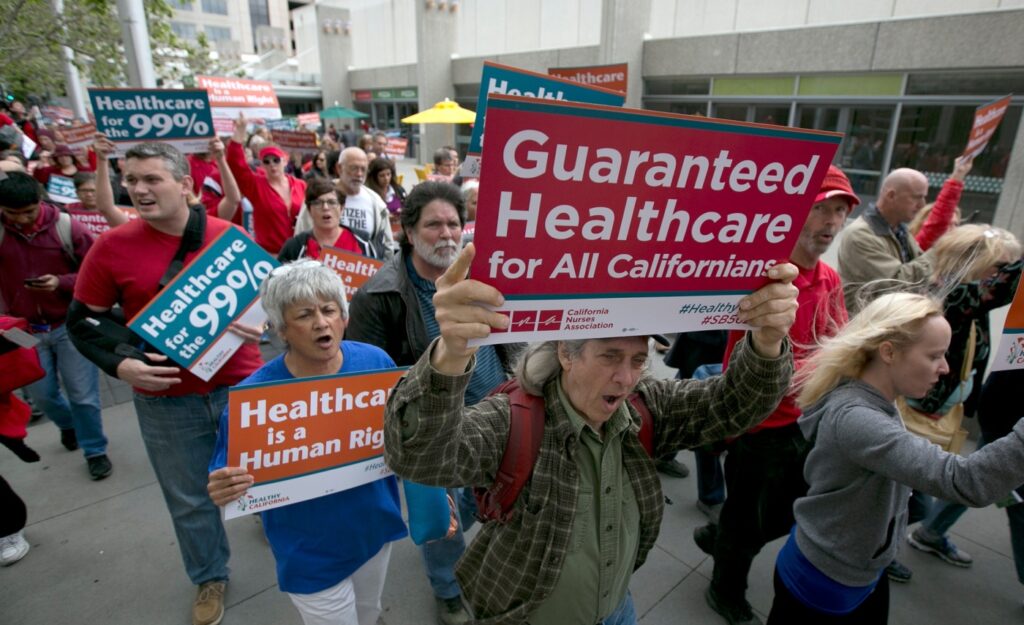
“Most of the harm in the world is done by good people,” wrote libertarian Isabel Paterson, “and not by accident, lapse or omission. It is the result of their deliberate actions, long persevered in, which they hold to be motivated by high ideals toward virtuous ends.”
That’s an excerpt from Paterson’s 1943 book, “The God of the Machine.” It’s the start of the chapter titled, “The Humanitarian with the Guillotine.”
Paterson walks the reader through the thought process and method that leads good people, acting on a bad premise, to support policies that lead the world into “periods when millions are slaughtered, when torture is practiced, starvation enforced, oppression made a policy, as at present over a large part of the world, and as it has often been in the past.”
She identifies this motive in “humanitarian” thinking: “The humanitarian wishes to be a prime mover in the lives of others. He cannot admit either the divine or the natural order, by which men have the power to help themselves.”
The humanitarian quickly runs into the problem that “the competent do not need his assistance” and that the majority of people “do not want to be ‘done good’ by the humanitarian.”
That’s what happened in the California Assembly last week. Progressive activists who were bent on imposing single-payer health care on the entire population of the state, and who had labored mightily for years to elect enough progressive lawmakers to have a super-majority, veto-proof control of the Legislature, watched in horror and disbelief as Assembly Bill 1400 was pulled from the floor without a vote on the last day it was eligible for consideration this year.
AB 1400 would have abolished private health insurance and Medicare in California. It would have put everyone on the same health care plan, run by the state and paid for by a massive tax increase on businesses and incomes.
The author of AB 1400, Assemblymember Ash Kalra, D-San Jose, was excoriated by the California Democratic Party’s Progressive Caucus, which had threatened Democratic lawmakers with the loss of the party’s endorsement — and the campaign cash that comes along with it — if they voted against the bill.
But Kalra said the bill was “double digits” short of the 41 votes needed to pass. “I don’t believe it would have served the cause of getting single payer done by having the vote and having it go down in flames and further alienating members,” he explained to supporters on a Zoom call later that day.
The question to be answered, before the state and the country waste any more time on this proposal, is: Why was it going to go down in flames?
The answer was identified by Isabel Paterson. The humanitarian’s “scheme is impracticable,” she wrote. “The objective is to do good to others as a primary justification of existence; the means is the power of the collective; and the premise is that ‘good’ is collective.”
But when “the objective is to do good to others as a primary justification of existence,” what exactly is each person supposed to do? “Shall A do what he thinks is good for B, and B do what he thinks is good for A? Or shall A accept only what he thinks is good for B, and vice versa? But that is absurd. Of course what the humanitarian actually proposes is that he shall do what he thinks is good for everybody. It is at this point that the humanitarian sets up the guillotine.”
In a single-payer health care system, the first “guillotine” is the government’s cuts to the payments made to health care providers. We already see this in Medi-Cal, where the reimbursements are so low that many doctors limit the number of Medi-Cal patients they will see, or refuse to accept Medi-Cal patients at all. The low reimbursement rate camouflages the true cost of the program, which is shifted to others through higher costs or longer waits for care.
The second “guillotine” is the government’s cuts to available services, generally or to specific categories of patients. While not exactly “death panels,” boards of government appointees will decide the standard of care, and since the government is the “single payer,” that’s all you’ll be able to get, no matter where you go, anywhere in the state. We have seen in the COVID-19 pandemic the precise mechanism by which government “guidance” controls what physicians can do for their patients. Some treatments are allowed and others are forbidden. But how are these decisions made? Look up “regulatory capture” sometime, maybe on a rainy night when you’re in the mood for a horror story.
Related Articles
On Anaheim stadium deal, the truth will emerge: Harry Sidhu
Slash regulations to boost equity in legal cannabis industry
Housing and the California Dream
Single-payer flops in the state Capitol
How California deputies became highway robbers
Progressives like to make thunderous statements on the campaign trail that “health care is a human right,” but that’s not true. Health care is a service, and it has to be provided by somebody. There can’t be a “right” to anything that has to be provided by somebody else. How many people will choose to go to medical school if their professional decisions and their income will be completely controlled by the government?
Our society wants and will always have a safety net to provide for the needs of people who can’t provide for themselves. But other people have to pay to provide those goods and services, and what those people need is the freedom to work and to keep most of the fruits of their labor. They don’t need, and shouldn’t vote for, humanitarians with guillotines.
Susan Shelley is a member of the Southern California News Group’s editorial board. You can write her at Susan@SusanShelley.com and follow her on Twitter @Susan_Shelley.
